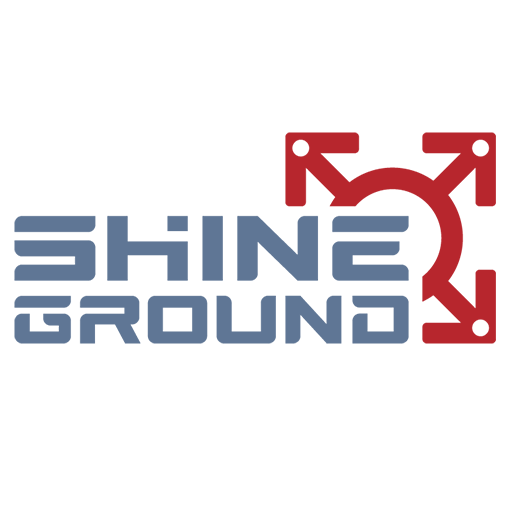In precision engineering with 4040 aluminum profiles (40 mm × 40 mm), connection methods determine structural performance. These profiles strike an optimal balance between strength, weight, and cost, making them ideal for industrial automation, robotics, workstations, and DIY projects. While larger profiles like 8080 offer higher load-bearing capacity, 4040 remains popular for its versatility and strength-to-weight ratio. However, even robust extrusions fail without proper connections. This analysis examines how T-bolts and corner brackets impact stiffness, load capacity, and vibration resistance in 4040 aluminum frames.
Why Connection Methods Matter for 4040 Aluminum Frames
4040 aluminum profiles provide an excellent foundation for structural frameworks, but their performance is only as reliable as their connections. The joint between profiles experiences the highest stress concentrations, making fastener selection critical for:
- Structural Integrity: Preventing joint slippage or deformation under load
- Vibration Resistance: Maintaining stability in dynamic applications
- Longevity: Ensuring connections don’t degrade under cyclic loading
- Safety: Preventing catastrophic failures in load-bearing applications
Understanding the mechanical differences between T-bolts and corner brackets helps engineers optimize frame designs for specific applications, from static machine bases to adjustable robotic arms.
T-Bolt Connections: Flexibility with Precision
How They Work
T-bolts feature a distinctive T-shaped head that slides directly into the T-slots of aluminum profiles (typically 8mm slots in 4040 series). When tightened, the T-head grips the slot’s interior while the threaded end secures components with a nut. This design allows for automatic positioning and locking during installation, especially when used with flange nuts [3,11](@ref). Unlike standard bolts, T-bolts distribute pressure across a flat base, providing superior load distribution in extrusion systems.
Impact on Stability
- Adjustability & Reconfigurability: T-bolts allow repositioning along the slot without disassembling the frame, ideal for modular designs. However, this can introduce micro-movement if not torqued sufficiently, potentially compromising precision in high-tolerance applications.
- Load Distribution: Forces transfer through friction between the bolt head and slot. Under heavy dynamic loads (e.g., machinery vibration), this friction can degrade over time, risking slippage. Serrated flange nuts help prevent loosening in vibration-prone environments [13](@ref).
- Torsional Rigidity: T-bolts excel in compressive/tensile loads but offer limited resistance to twisting forces. For frames experiencing torque (e.g., robotic arms), additional bracing is often needed to prevent joint rotation.
- Installation Speed: The drop-in design reduces assembly time by 20%+ compared to traditional fasteners, enabling rapid prototyping and adjustments [13](@ref).
Best Applications for T-Bolts
T-bolts deliver maximum value in scenarios requiring frequent adjustments or modularity:
- Prototyping environments requiring iterative design changes
- Test fixtures needing positional flexibility
- Lightweight structures where weight savings are critical
- Applications with primarily axial loads (e.g., vertical presses)
Corner Brackets: Rigidity at the Joints
How They Work
Corner brackets (typically L-shaped or gusseted) bolt directly to extrusion faces, creating fixed 90° connections. These brackets physically bridge extrusion ends, typically using T-nuts and hex socket bolts installed in the profile grooves [5](@ref). Heavy-duty variants include reinforced edges or ribs for added strength, with common sizes like 38×38×35mm for 4040 profiles [1](@ref). Made from aluminum die-casting alloy with sandblasted surfaces, quality brackets offer good rust resistance and high hardness [1](@ref).
Impact on Stability
- Shear Strength: Brackets physically bridge extrusion faces, resisting shear forces better than friction-dependent T-bolts. This minimizes joint deflection under lateral loads, making them ideal for machine frames subject to side forces.
- Vibration Damping: Steel or thick aluminum brackets absorb harmonics more effectively than point-fastened T-bolts, reducing resonance in motorized systems. Their larger surface area distributes vibrational energy across multiple contact points.
- Weak Points: Brackets concentrate stress at bolt holes. Over-tightening can deform aluminum threads, while undersized brackets risk cracking under cyclic loads. Proper installation requires tightening bolts by hand before final torque application with a screwdriver [5](@ref).
- Alignment Challenges: Imperfect bracket alignment induces bending stress. Self-aligning designs mitigate this but add cost. Technicians should avoid over-tightening screws during initial positioning to allow for adjustments [5](@ref).
Best Applications for Corner Brackets
Corner brackets excel in applications demanding maximum stiffness and vibration resistance:
- CNC router frames requiring absolute rigidity
- Structures facing high lateral forces or impacts
- Compressor bases and vibration-prone equipment
- Safety-critical applications where joint failure is unacceptable
Performance Comparison: T-Bolts vs. Corner Brackets
| Performance Factor | T-Bolts | Corner Brackets |
|---|---|---|
| Load Type Suitability | Axial (tension/compression) | Shear/lateral |
| Reconfigurability | High (slide-and-lock) | Low (fixed position) |
| Torsional Resistance | Moderate | High (especially with gusseted designs) |
| Vibration Loosening Risk | Possible over time without serrated nuts | Rare (especially with thread-locking bolts) |
| Installation Speed | Fast (single-step tightening) | Moderate (requires precise alignment) |
| Material Options | Stainless steel, medium carbon steel | Aluminum alloy, steel, stainless steel |
| Cost Efficiency | Higher per unit but lower installation time | Lower per unit but higher installation time |
Application Selection Guide
Pro Tip: Hybrid Approach
Combine both connection methods! Use corner brackets for primary structural joints and T-bolts for accessory mounts and adjustable components. This hybrid approach balances rigidity where needed with flexibility where desired.
When to Choose T-Bolts
- Your design requires iterative adjustments (R&D setups, prototyping)
- Weight savings are critical (T-bolt assemblies are lighter)
- Loads are primarily axial (vertical presses, lifting applications)
- Projects with evolving requirements needing future modifications
When to Choose Corner Brackets
- Joint rigidity is non-negotiable (machine tool frames, precision stages)
- Structures face high lateral forces or impact loads
- Vibration damping is a priority (power transmission systems)
- Applications where safety requires maximum joint integrity
The Structural Verdict
Neither connection method is universally “better”—optimal selection depends on matching the connection type to your frame’s stress profile. For 4040 aluminum frames:
T-bolts deliver agility with their slide-and-lock functionality, enabling rapid reconfiguration and weight efficiency, but trade off absolute rigidity.
Corner brackets offer brute-force stability through direct mechanical bridging of extrusion joints, providing superior vibration resistance and shear strength at the cost of flexibility.
In high-vibration or safety-critical applications, corner brackets typically provide superior performance. For evolving builds and prototyping environments, T-bolts deliver unmatched adaptability. Whichever system you choose, proper installation torque and material quality (e.g., stainless steel bolts for corrosion resistance) ultimately determine connection stability and longevity.
Fun Fact: A properly configured 4040 frame with optimized brackets can rival the torsional stiffness of larger profiles—proving that joint engineering matters as much as the beams themselves.


